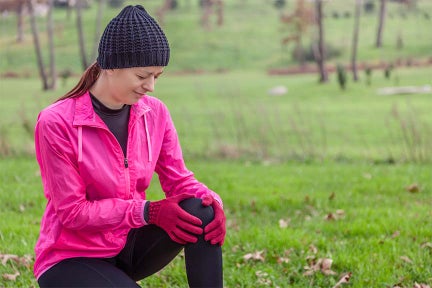Don’t Let Cold Weather Lead to Injury During Workout

Winter weather may not mean the same thing on the Gulf Coast as it does in Wisconsin, but between January and April, temperatures around freezing are not out of the question. Exercising in weather like that does come with certain risk of injury. “Naturally, the body isn’t as agile or flexible in freezing, or near freezing temperatures, as it is when it’s not as cold,” said Jim Presley, M.D., a non-surgical sports medicine specialist at Andrews Institute for Orthopaedics and Sports Medicine. “Working out in that type of weather can lead to injury, unless proper precautions are taken.”
Know Before You Go
But, the cold weather doesn’t mean you need to put your workout on hold until the temps come up. There are ways to minimize the risk. At the top of the list is to know the forecast. If you are planning an outdoor workout that day or the next, check the local forecast to make sure the weather is conducive to exercising. An outdoor temperature of 35 degrees Fahrenheit with strong winds may produce a wind chill factor in the teens or lower. Unless you have workout gear that covers most of the body, including extremities like your fingers, ears and nose, exercising indoors may be a better idea in those conditions.
Be Ready to Adapt
Dressing in layers is another important thing to remember. Exercising can heat you up quickly, despite the actual cold air. That leads to sweating which takes heat away from your body and you may feel chilly. Wearing several layers allows you to remove and add clothing, depending on how you are feeling. A base layer of a synthetic fiber can wick moisture away from the body and help regulate your body temperature.
A significant wind can exacerbate this issue in the winter, which leads to another tip. Whenever possible, head into the wind to start the workout so you’re not dealing with the worst of the wind chill during the second half of the workout when you’re more fatigued and perspiring.
Hydration Is Key
Colder air is often drier air and that means your skin and clothes may dry out easier. Dry clothes and colder temperatures may make you feel like you aren’t sweating and don’t need to take in water, but this can lead to dehydration, especially during prolonged exercise outdoors. Using moisturizer or lotion and drinking plenty of water is a great way to make sure that doesn’t happen to you.
Warm Up and Cool Down, Even When It’s Cold
A longer warm up may be necessary in colder temperatures to improve blood flow to muscles and prepare them for a hard workout. Exercising hard when muscles are cold and tight can lead to a new injury or worsen an existing one. A slow warm up can go a long way in keeping you healthy.
Once the workout is over, it is extremely important to cool down. “Stopping a workout abruptly in cold temperatures will allow rapid cooling of muscles and can lead to stiffness and soreness which may, in turn, lead to injury. A light jog or walk right after a hard run, or a slow bike ride for a few minutes after a long, fast one helps remove toxins from muscle tissue, leading to a quicker recovery which will leave you feeling less stiff and sore,” Presley said.
Winter weather workouts on the Gulf Coast may not be as treacherous as they are up north, but ignoring these simple tips may still lead to injury. If you do sustain an injury or start to feel pain, give us a call at 850.916.8700 or visit AndrewsInstitute.com to schedule an appointment. We have more than 30 physicians specializing in orthopedics and sports medicine that will help you get back to your workout as soon as possible.
